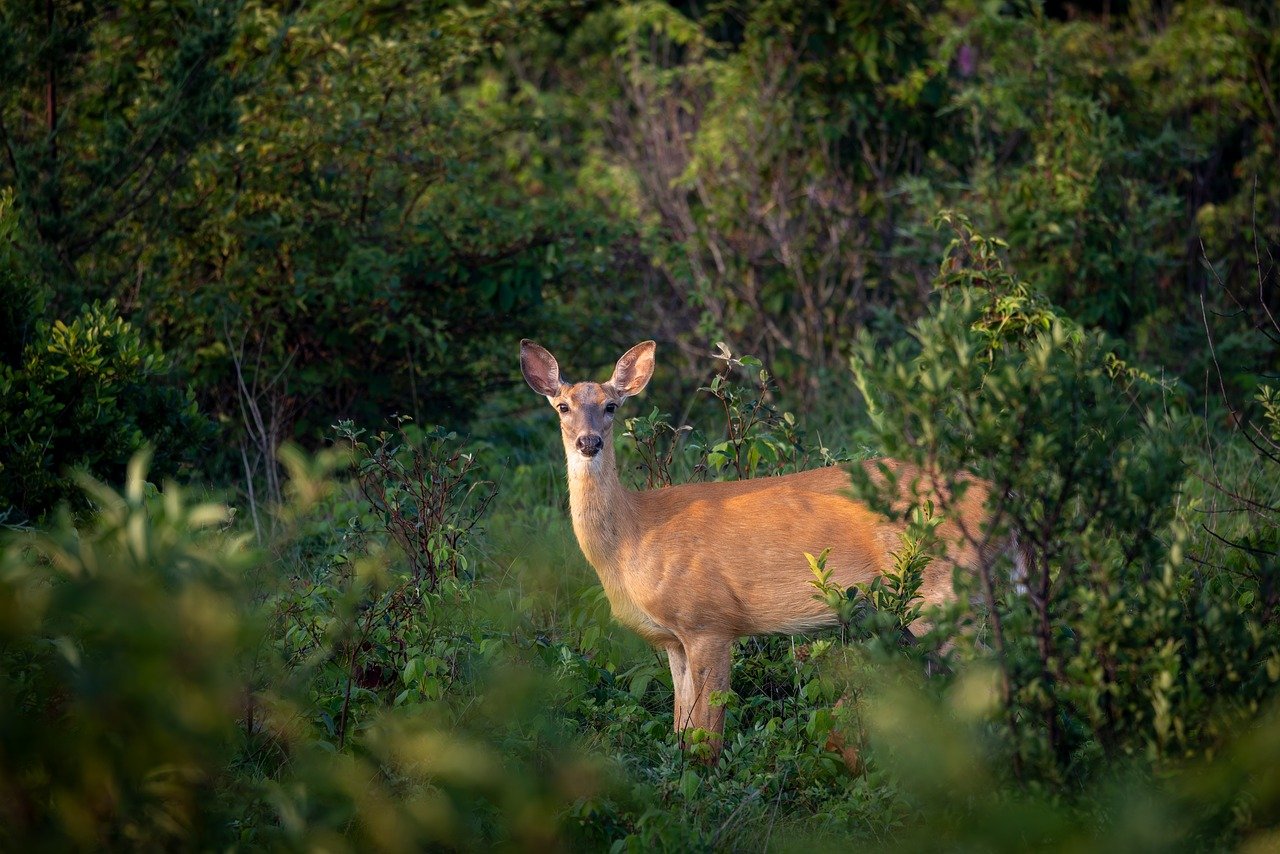The white-tail deer is cute, yes. Over the past decade, many of us have enjoyed increased backyard visitation and photo ops from an expanding deer population.
We may also have cursed them for the scat they leave behind and for the way they shamelessly devour our gardens and landscaping. The unluckiest of us may have had road encounters with white-tailed deer, this seemingly less predictable and less timid creature that has acclimated to our close proximity.
But backyard and road hazards are only part of a bigger problem. What concerns local nature experts is the damage the beautiful creatures have wrought on wooded areas and the ecosystems that support other wildlife and keep our forests in balance.
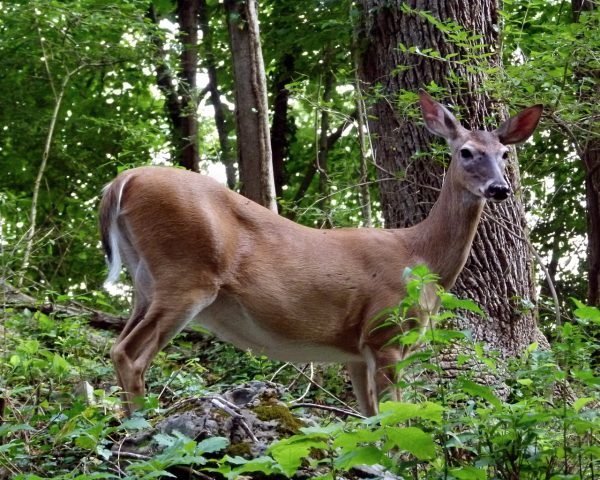
About the white-tail deer and deer overpopulation
The white-tail deer is the dominant deer species in the region. These herbivores are open-minded browsers, eating all types of vegetation: fruits and nuts, grass, leaves, twigs, fungi, and even crops like alfalfa and corn. They are most active at dawn and dusk, though in more densely populated areas, it is not uncommon to see deer out in daylight.
While it is hard to peg a population number, the Pennsylvania Game Commission reports that in the 2022-23 hunting season, Pennsylvania hunters “harvested” 12% more deer on their hunts. This increase in reported deer kills is part of a trend that suggests a steady increase in deer population that some estimate could be as high as 1.5 million in the state.
Experts may consider the “carrying capacity” of the landscape, and it is estimated our local forests can sustain about 8 – 12 deer per square mile. A USDA report estimated the deer population in Solebury Township at 189 deer per square mile. That’s almost 20 times the population that our forests are able to support.
Development and building leave less natural habitat to absorb a growing deer population. In suburban and exurban settings, white-tail deer also lack natural predators, leaving them unchecked and free to do major damage to the forested areas where they live and feed.
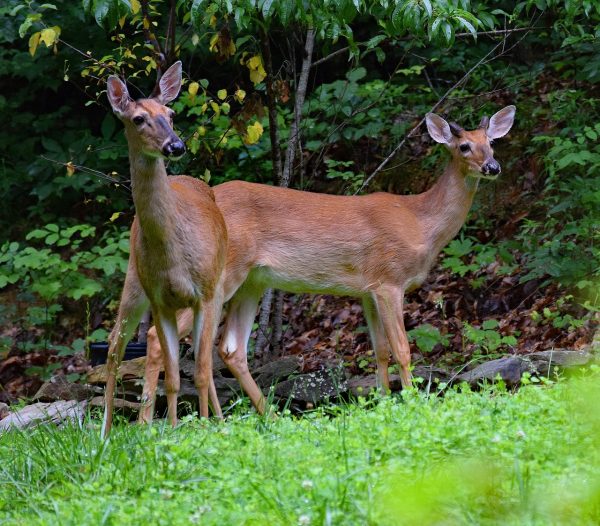
How do deer damage local woodlands and forests?
The threat to young trees
Deer are disrupting forest regeneration, all but wiping out the next generation of trees from wooded areas throughout our region. The danger is that as mature trees die out or are harvested, there will be no trees ready to replace them. While the problem is not obvious now, it will be undeniable in a generation if left unchecked. White-tail deer damage young trees in a couple of ways.
Hungry deer in growing numbers browse on saplings and small trees. Their browsing is enough to kill new tree growth or severely stunt a young tree’s growth. A variety of native oak trees are among the species most at risk because deer find them very palatable. Deer browse endangers the tender buds and leaves of new spring growth.
Deer damage trees during mating season as well, when bucks rub their antlers on tree trunks to mark their territory. With these markings, they strip bark from tree trunks and damage the layers underneath, which will interfere with a tree’s ability to distribute the nutrients it needs to stay healthy or even survive.
Eating up the native plants
Deer eat what they find at eye level and below, so in addition to young trees, they consume native plants that make up the understory vital to forest growth and renewal. When hungry, deer will stand on their hind legs and can reach up to six feet high to browse leaves, so they browse high and low.
Why do they prefer native plants? They are familiar and delicious, comfort food for a growing population. As deer gobble up wildflowers and native shrubs, forests lose the biodiversity that attracts other local wildlife essential to the balance of natural life – from pollinating insects to nesting birds – disrupting the local ecosystem.
With less competition from hearty native plants and limited food appeal to the resident wildlife, invasive plants are left to spread unchecked. Their proliferation threatens biodiversity and crowds out the plants that support the forest, its wildlife, and its regeneration.
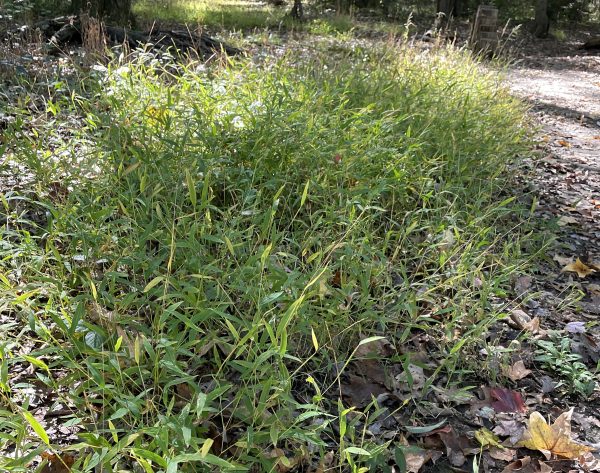
The invisible problem of invasive plants
To the average hiker out enjoying forest trails, the problem can be invisible. Invasive plants move in stealthily. And as they are less desirable to native wildlife, their growth can go unchecked, crowding out the native plants so critical to habitat and local animal diets.
To the untrained eye, non-natives like Japanese stiltgrass (photographed above) are lush, green, and lovely. But naturalists agree this species in particular outcompetes local plants, spreads to fill in the understory of the forest, and chokes out young trees struggling to emerge from the forest floor.
Some invasive plants actually kill or harm the mycorrhizal fungus that permeates the forest soil, connecting all woody trees and possibly shrubs into a network that shares nutrients.
Invasive shrubs also provide cover for small mammals. Due to its growth pattern, areas invaded by Japanese barberry tend to have a higher density of rodents that carry the ticks that spread Lyme disease. And the rodents that can comb the ground munch up seeds and sprouting trees.
With this and the damage deer themselves do by grazing on young trees, we are in danger of losing a generation of trees.
In other words, as mature trees die out, there are far fewer trees making it to maturity to replace them. In twenty years, our forests could look completely different, reshaped in large part by deer activity.
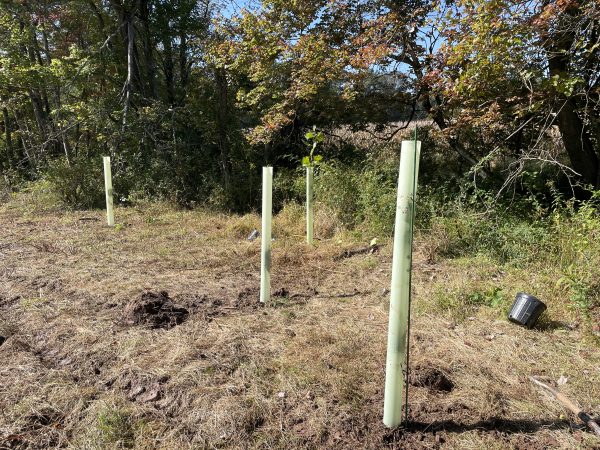
How can we control deer damage in natural areas?
With the havoc wrought by deer overpopulation – from a loss of biodiversity to the threat for our forest – how can we control the problem? How can we protect our woodlands and ensure their future?
There are no magic solutions, but there are a few strategies to help control or manage the problem.
Native species management and reforestation
Removal of non-native plants is labor intensive. Community work days and trail maintenance events can allow volunteers to become part of the solution. Under the guidance of local experts, teams of workers can pull invasives and work to plant trees.
Heritage Conservancy hosts Fridays in the Forest work days that allow volunteers to be part of the solution. Participants learn about the local balance of nature and then help our expert naturalists with things like pulling invasives and caging trees.
Fencing and protecting new plantings
Fencing portions of a forest can allow new trees to grow without the danger of deer browse. However, the installation and maintenance of high, permanent fencing is an extremely costly option and does not scale well, so its impact is limited.
Protecting individual trees is a more practical solution. When planting new trees, organizations like Heritage Conservancy use individual fencing around larger saplings.
Protective tubes are another way to ensure newly planted trees can reach viability without deer damage. The tubes photographed above are perforated and biodegradable, so that as the trees’ trunks grow over the years, they break through the protective tubes. By this phase of maturity, deer are no longer as big a threat to the tree’s survival. Once the tubes are no longer needed, we will collect them and properly dispose of them.
Culling the deer population
What about predators? Bears, wolves, coyotes, mountain lions, and jaguars are the natural predators of white-tail deer. But locally, the only predators that deer populations face in this region with any regularity are humans and cars.
Deer hunting helps lower the impacts of the deer on the forest. Controlled hunts under very tight regulation are part of a multi-pronged solution, including on some of the preserves that are owned and managed by Heritage Conservancy. Our hunters are licensed, carefully vetted, and strictly limited in their timing and range.
Awareness and support
Of course the last defense against the dangers of deer damage and invasive species to our forests is public education. The deeper our understanding of these issues and their danger to the future of our forests, the more we can spread the word, get involved in work to help foster forest regeneration, and support organizations that are working to save our natural lands.
For additional information on the topic check out these resources.
https://www.alleghenyfront.org/deer-and-invasive-species-threaten-long-term-survival-of-pennsylvanias-forests/
https://ecosystems.psu.edu/outreach/youth/sftrc/deer/issue-deer
https://www.soleburytwp.org/sites/g/files/vyhlif1221/f/uploads/usda_fact_sheet_solebury_0.pdf
Wildlife Conservation and Game Management 2024 WCGM Handbook Booklet and Form
